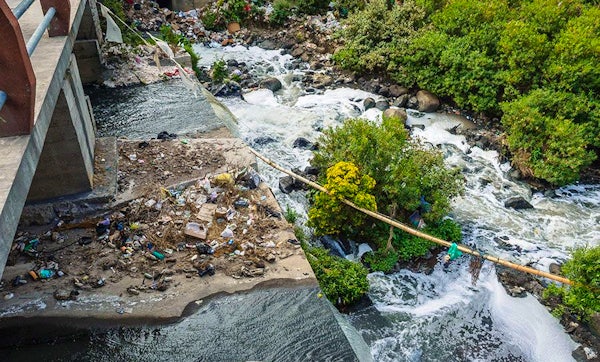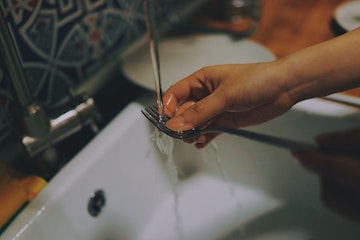Greywater Hidden Effects: A Growing Environmental Concern

When we think about the environmental impact of ships, we often focus on issues like oil spills and greenhouse gas emissions. However, there's a less-discussed concern that poses a significant threat to our oceans: greywater discharge from vessels. Greywater, which includes wastewater from sinks, baths, showers, laundry, and galleys, is a substantial by-product of maritime activities, particularly on cruise ships and cargo vessels. Grey water from ships and yachts is released untreated into the sea. In contrast, the discharge of sewage (black water) is largely governed by the International Convention for the Prevention of Pollution from Ships (MARPOL) and other national legislation. The potential for the greatest impact on marine ecology is present when yachts are close to the coast, beaches, ports, and marinas, where there are swimmers and other recreational water users.

Quantity and Sources of the Greywater Deluge
Amazingly, cargo ships alone produce 12 litres of greywater per person each day. In contrast, cruise ships produce about 253.6 litres per person daily, more than twice that amount! This corresponds to a whopping 750,000 gallons of greywater discharged every day for a cruise ship. Greywater discharged from ships is reported to have totalled 1.5 billion litres in 2017, with cruise ships being responsible for a staggering 90% of this discharge. These staggering figures highlight how urgent it is to address the greywater issue.

The Greywater Cocktail: Pollutants and Composition
Greywater is more than solely harmless soapy water. Given that greywater frequently contains a variety of chemicals and fats, including oil and grease, detergent and soap residue, metals (such as copper, lead, and mercury), bacteria, pathogens, hair, food particles, organic matter, oxygen-depleting substances, suspended solids, bleach, pesticides, and phosphates, it is technically a greater challenge to treat than black water. Pathogens, which are a concealed threat, are present in the darkest parts of greywater.
Greywater contains worrying levels of faecal-borne pathogens, with faecal enterococci found in at least 70% of analyzed samples, according to studies. This information highlights the very real danger that greywater poses to people's health since, if not effectively controlled, these microorganisms can cause digestive disorders.
For instance, intestinal pathogenic bacteria like salmonella and campylobacter can find their way into greywater through the mishandling of food in the kitchen or, more unsettlingly, from materials derived from faeces. These findings highlight the need for stringent measures and advanced treatment techniques to neutralise these pathogens and prevent potential health crises arising from greywater contamination.
Microplastics have become an increasing problem, with some studies reporting record-high quantities. Ecosystems and marine life are seriously threatened by this pollution. Furthermore, dangerous compounds including persistent organic pollutants (POPs), which bioaccumulate in marine flora and fauna and have an effect on human health, and steroid hormones, which can change the sexual characteristics of aquatic creatures, are frequently found in greywater.

Marine Ecosystems' Impacts
Greywater spills into the seas and oceans can have disastrous effects. They can cause dead zones and harmful algal blooms by spreading pathogenic bacteria and viruses, reducing oxygen levels, and raising nutrient concentrations. These alterations have an impact on the entire marine food chain, having an impact on not only aquatic life but also the way of life of the communities that depend on these resources.

Seeking Solutions
Addressing the greywater problem requires multifaceted solutions. Here are some steps that can be taken:
- Use non-toxic products: Greywater's chemical burden can be reduced by consumer research and the use of non-toxic cleaning products by the maritime industry.
- Water conservation: Use water-saving fixtures like sink faucets and low-flow showerheads to cut down on the amount of greywater generated.
- Proper waste management: Use sink strainers to collect solid waste and dispose of it properly rather than allowing it to enter the greywater stream to ensure proper waste management.
- Shoreside facilities: use shoreside facilities at marinas as much as possible to avoid depending on the onboard equipment for tasks like cleaning dishes, doing laundry, and taking showers.
- Retaining greywater: while at sea, keep the wastewater for the pump-out facilities. Discharge should take place at least three miles offshore, if necessary.
- Water-only boat cleaning: consider water-only wash downs of your vessel, which can be effective for boat cleaning without introducing harmful chemicals into the water.
- Regulation and enforcement: Push for a change! We need international regulations to impose "no-discharge" zones in critical marine areas and limit the discharge of greywater.
- Advanced treatment systems: To efficiently treat both sewage and greywater, invest in modern wastewater treatment systems like Advanced Wastewater Treatment Systems (AWTS).
Greywater may appear harmless, yet it has extensive and harmful effects on marine ecosystems. Addressing the greywater issue is becoming more critical as maritime activity expands. We may mitigate the damage brought on by greywater discharge and guarantee the health and sustainability of our oceans for future generations by adopting better practices, rules, and cutting-edge treatment technologies.